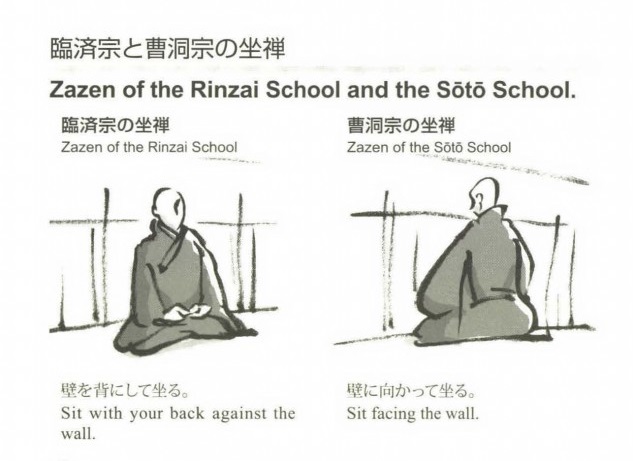
The Calm app can be used as a free resource by teachers. The app offers 30 days of mindfulness activities as well as a self-care guide. It teaches mindfulness basics. The trial period is as short as one week and teachers are free to join the program. It also offers tips and ideas to help teachers incorporate mindfulness into their classrooms. It is a great tool for integrating mindfulness into the classroom. You can learn more about Calm App by visiting their website.
Teachers can use the Calm app for free. Simply visit the website to sign up and complete the brief application. Once approved, you have unlimited access and can practice guided meditations. Additionally, you will be provided with best practices and tips to incorporate mindfulness into the classroom. Calm Kids can be downloaded to be used with students. The app is compatible with many devices and browsers. It's available in Google Play and Apple's App Store for free.

Calm has great content for families. It offers bedtime meditations, mini-courses for teens and toddlers, and even bedtime meditations. It has classic stories as well as content for families. Calm can be downloaded for personal use. Calm can also be used by people with sight impairments. However the interface is not picture-based. You can also install a screen reader to help you read text, but not images, if you are visually impaired.
Teachers can also sign up for a free subscription to Calm to use the app. Calm's premium version can be accessed for free if you are older than 13. Simply go to the "Discover” hub to search for the meditation that interests you. This way, you can choose the one that best suits your needs. This app is available for free to teachers in Australia, Canada and the US.
Calm is available for teachers free of charge, but the premium version includes additional features. There is a section dedicated to breathing techniques and courses for mediation. Meditation classes, as well courses for intermediate and advanced meditationts are available. For beginners, you may want to subscribe to a paid membership. While this is a good deal for you, it's not for everyone. Before signing up, you'll have to decide if Calm suits your needs.

Teachers are not charged for the Calm app, but there is a limit to what they can do with it. Teachers cannot make changes to their curriculum using the Calm app. You can't alter your curriculum if a teacher is not present. It's important to stay positive in order to keep kids calm and focused. It's free for teachers so it's a great choice for educators.
FAQ
How often should I exercise
It is important to exercise for a healthy lifestyle. There is no set time limit for exercising. Finding something that you love and sticking with it is the key.
If you are working out three times a weeks, aim to do 20-30 minute of moderate intensity. Moderate intensity means that your muscles will continue to work hard even after you finish. This type works out burns around 300 calories.
Walk for at least 10 minutes four days a weeks if you prefer walking. Walking is low impact and easy on your joints.
You can also run for 15 minutes, three times per week. Running is an excellent way to lose weight and tone your muscles.
If you're not used to exercising, start slowly. You can start with only 5 minutes per week of cardio. Gradually increase the amount of cardio you do until you reach your goal.
Here are 7 ways to live a healthy lifestyle.
-
Take care of your health
-
Exercise regularly
-
Rest well
-
Make sure to drink plenty of water.
-
Get enough rest
-
Be happy
-
Smile often.
What is the best food for me?
Your lifestyle and individual needs will determine the best diet for your body. You also need to consider how much energy you expend during exercise, whether you prefer low-calorie foods, and if you enjoy eating fruits and vegetables.
If you are trying to lose weight, then you may want to try intermittent fasting. Intermittent fasting is a way to eat only certain meals during the day instead of three large meals. You may find that this method works better for you than traditional diets that include daily calorie counts.
Intermittent fasting is believed to increase insulin sensitivity. It may also reduce inflammation. This may lead to a decrease in diabetes risk and blood sugar levels. Other research suggests that intermittent fasting may promote fat loss and improve overall body composition.
Why does weight change as we age?
How do you determine if your bodyweight is changing?
Weight loss happens when there is less muscle mass and more fat. This means that calories must be consumed at a rate greater than energy. The most common cause of weight loss is decreased activity levels. Other factors include stress, illness and pregnancy. A person who has more fat than their muscle mass will experience weight gain. It occurs when people consume more calories each day than they use. Overeating, increased physical activity and hormonal changes are all common reasons.
The main reason why our bodies lose weight is because we consume fewer calories than we burn. When we exercise regularly, we increase our metabolism rate which burns off more calories throughout the day. However, this doesn't mean that we'll necessarily get thinner; what matters is whether or not we're losing fat or gaining muscle. If we're burning more calories that we consume, we'll lose weight. But, if we consume far more calories than what we burn, then we actually store them as fat.
As we grow older, we tend to become slower at moving around and therefore we don't move as much. We also tend not to eat as much food as we used to when we were younger. We tend to gain weight. On the other hand, we have more muscle mass and look larger than we actually are.
It's not possible to measure how much weight your body has lost without weighing yourself every week. There are many options for measuring your weight. There are many ways to measure your weight. You can check your waist, hips, thighs, arms and legs. Some people prefer to use bathroom scales while others like to use tape measures.
Track your progress by measuring your waistline and weighing yourself every week. You can also take pictures of yourself every few months to see how far you've come.
You can also find out how much you weigh by looking up your height and weight online. If you're tall at 5'10", and weigh 180lbs, your weight would be 180.
Do I have to count calories?
It is possible to wonder "What diet is best for me?" or "is counting calories necessary?" Well, the answer depends on several factors including your current health status, your personal goals, your preferences, and your overall lifestyle.
The Best Diet for Me - Which One is Right For You?
My personal health, goals and preferences as well as my lifestyle determine which diet is best for me. There are many good and bad diets. Some work well for certain people while others don't. What should I do? How can I make the right choice?
These are the main questions addressed by this article. It begins by briefly describing the various diets available today. After that, you will learn about the pros and disadvantages of each type. We'll then discuss how to choose which one is best for you.
Let's begin by briefly reviewing the different types and diets.
Diet Types
There are three types of diets available: ketogenic, high-protein, and low fat. Let's discuss them briefly below.
Low Fat Diets
A low fat diet means a diet that reduces the intake of fats. This is accomplished by decreasing the intake of saturated fats such as butter and cream cheese. These fats can be replaced with unsaturated fats like avocados and olive oil. For those looking to lose weight quickly, a low-fat diet is often recommended. However, this kind of diet may cause problems such as constipation, heartburn, and indigestion. In addition, it may lead to vitamin deficiencies if a person doesn't get enough vitamins from their food.
High Protein Diets
High protein diets reduce carbohydrates to favor of proteins. These diets often have higher levels of protein than most other diets. These diets can help increase muscle mass and decrease calories. One problem is that they might not be sufficient to provide regular nutrition. They can also be very restrictive so they may not be suitable for everyone.
Ketogenic Diets
Ketogenic diets can also be known as keto diets. They are high fat and moderately carbohydrate and protein-rich. They are commonly used by athletes and bodybuilders, as they allow them train harder and more frequently without getting tired. You must adhere to all side effects, including fatigue, headaches, nausea and headaches.
Statistics
- WHO recommends reducing saturated fats to less than 10% of total energy intake; reducing trans-fats to less than 1% of total energy intake; and replacing both saturated fats and trans-fats to unsaturated fats. (who.int)
- WHO recommends consuming less than 5% of total energy intake for additional health benefits. (who.int)
- In both adults and children, the intake of free sugars should be reduced to less than 10% of total energy intake. (who.int)
- nutrients.[17]X Research sourceWhole grains to try include: 100% whole wheat pasta and bread, brown rice, whole grain oats, farro, millet, quinoa, and barley. (wikihow.com)
External Links
How To
27 Steps to a Healthy Lifestyle when Your Family Buys Junk Food
The most common way to eat healthy is to cook at home. It can be difficult to cook healthy meals at home. This article will offer some suggestions on making healthier dining choices at restaurants.
-
Choose restaurants that offer healthy options.
-
Before you order any meat dishes, make sure to order salads or vegetables.
-
Ask for sauces made without sugar.
-
Avoid fried items.
-
Instead of ordering fried meats, request grilled meats.
-
You shouldn't order dessert unless it is absolutely necessary.
-
After dinner, make sure you have something to eat.
-
Take your time and chew slowly.
-
When you eat, drink plenty of fluids.
-
Breakfast and lunch should not be skipped.
-
Include fruit and vegetables with every meal.
-
Choose milk over soda
-
Try to stay away from sugary drinks.
-
Reduce the salt content of your diet.
-
Try to limit your frequent visits to fast-food restaurants.
-
Ask someone to join you if you cannot resist temptation.
-
Make sure your kids don't spend too much time on TV.
-
During meals, turn off the TV.
-
Do not consume energy drinks.
-
Take regular breaks from the office.
-
Get up earlier in the morning to exercise.
-
Exercise everyday.
-
Start small and progress slowly.
-
Realistic goals are important.
-
Be patient.
-
Find time to exercise even if you don't feel like it.
-
Use positive thinking.